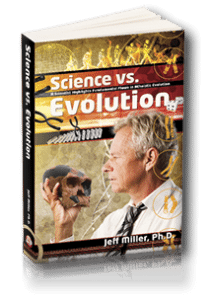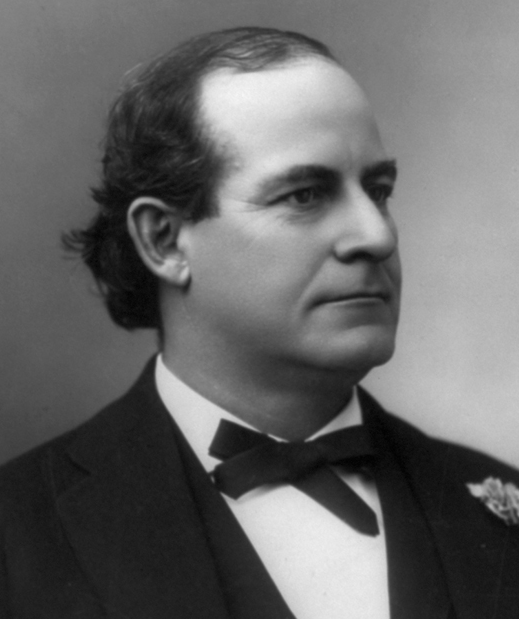When Bryan Took the Stand
| by | Brad Bromling, D.Min. |
As the summer heat was beginning to swelter in the small Tennessee town of Dayton, a cultural war raged in its packed courtroom. Ostensibly, John Thomas Scopes, a high school coach and temporary biology teacher was being tried in court for violating the State’s Butler Act, which prohibited the teaching of evolution. In reality, the public’s views about the relationship between Darwinism and the Holy Scriptures were placed in the spotlight of global attention.
As the world watched, the famed defense attorney, Clarence Darrow, and the silver-tongued, former Secretary of State, William Jennings Bryan, clashed like two territorial badgers. The contest reached its climax on the seventh day of the trial. Co-defense attorney Arthur Hays called Bryan to the witness stand so that Darrow could cross-examine him as an expert on the Bible. Although it was an unusual request, Bryan agreed to be questioned, provided that afterward he would be allowed to question Darrow. Looking back over the trial, this was the first of three major weaknesses in Bryan’s efforts to prosecute this case.
By taking the stand, he automatically placed himself on the defensive. This was both unnecessary and damaging to his cause. Darrow’s intention of ridiculing Bryan for his belief in Scripture was obvious, and he carried out his plan with malicious delight. Most of his questions were irrelevant, and asked for the sole purpose of getting Bryan to admit ignorance. By painting Bryan into a corner with such questions as, “Do you know anything about how many people there were in Egypt 3,500 years ago, or how many people there were in China 5,000 years ago?,” Darrow attempted to convey the impression that Bryan really did not know what he was talking about (World’s Most Famous Court Trial, 1925, p. 293). As long as Darrow had the floor and was leading the discussion, he could malign and appear to discredit anything Bryan said, which he often did.
Second, Bryan occasionally failed to offer reasonable, biblical answers to Darrow’s questions. He even resorted to humor a few times. For example, when Darrow asked: “Did you ever discover where Cain got his wife?” (one of skepticism’s favorite questions), Bryan replied: “No sir; I leave the agnostics to hunt for her” (World’s, 1925, p. 302). Levity aside, Bryan failed to offer the reasonable implication of Scripture (i.e., Cain married one of his sisters). The discussion continued:
-
- Darrow:
- You have never found out?
- Bryan:
- I have never tried to find.
- Darrow:
- You have never tried to find?
- Bryan:
- No.
- Darrow:
- The Bible says he got one, doesn’t it. Were there other people on the earth at that time?
- Bryan:
- I cannot say.
Whereas earlier Bryan admitted he had studied the Bible for more than fifty years, the audience saw that Darrow was capable of stumping him on apparently simple matters. Another instance related to Jonah:
-
- Darrow:
- Now, you say the big fish swallowed Jonah, and that he there remained how long—three days—and then he spewed him upon the land. You believe that the big fish was made to swallow Jonah?
- Bryan:
- I am not prepared to say that; the Bible merely says it was done.
- Darrow:
- You don’t know whether it was the ordinary run of fish, or made for that purpose?
- Bryan:
- You may guess; you evolutionists guess.
- Darrow:
- But when we do guess, we have the sense to guess right.
- Bryan:
- But do not do it often (p. 285).
Once again, Bryan had faltered. The Bible says plainly, “Now the Lord had prepared a great fish to swallow up Jonah” (Jonah 1:17), clearly implying divine involvement in the process. If Bryan had called upon Darrow to simply read the passage (as he did later on other questions), this needless confusion could have been avoided. Instead, he once again appeared ignorant. According to Irving Stone, Darrow had presented all of these questions to Bryan two years earlier (Stone, 1958, p. 277). Bryan declined to answer them at that time, and was embarrassed by them in the trial. It was a mistake for Bryan to take the stand without having studied these questions in advance—doubly so, because he tried to avoid the questions with mere humor.
The third (and major) weakness of Bryan’s defense of creation was his failure to take the Bible seriously with regard to the days of creation. This appears to be his only significant error of content. Whereas on the one hand he said, “I believe everything in the Bible should be accepted as it is given,” on the other hand, when Darrow asked, “Do you think the earth was made in six days?,” he responded: “Not six days of twenty-four hours” (World’s…, 1925, pp. 285, 299). He accepted the Day-Age Theory and believed that the days actually were periods of unknown duration. He said that creation “might have continued for millions of years” (pp. 302-303). Bryan could not argue consistently that the Bible should be “accepted as it is given,” and then turn around and suggest that the days of Genesis were indefinite periods of time.
Sadly, many continue to make the same mistake. But, this view was, and remains, an unneeded attempt to compromise the creation account with evolutionary dating schemes. All of the efforts to substantiate the Day-Age Theory are futile (see Thompson, 1995, pp. 125-156).
Because Darrow’s examination of Bryan yielded nothing germane to the trial, Judge John T. Raulston ruled that it would be expunged, and he disallowed Bryan to question Darrow. On the eighth day of the trial, the jury retired for deliberation. After only nine minutes, they returned with their verdict—guilty. Scopes was fined and the case was closed until a later appeal (which overturned the verdict on a legal technicality).
After nearly seventy-five years, the Scopes Trial continues to capture the imagination and curiosity of the Western world. Movies and plays about the trial still draw audiences, and the event persists as a landmark encounter in the history of the creation/evolution debate. The trial has been portrayed and interpreted in a variety of ways. The popular version of the event portrays Bryan as the obvious loser of the contest. While it is true that initially he won the battle, ultimately he lost the war. Blackmore and Page have explained why.
Sadly Bryan, a first-rate politician but no Bible scholar, allowed himself to be examined as an “expert witness” on the Bible. With Bryan in the witness box, the sharp-witted Darrow ruthlessly highlighted his opponent’s ignorance, and mocked his inconsistencies. At the end the state law was upheld; the high-school teacher had broken the law. But the lasting image, at least with the intelligentsia back in New York, was of pitiful ignorance and superstition arrayed against science and learning (1989, p. 134).
While creationists may be pleased, in large measure, with the efforts of William Jennings Bryan to defend the Truth, it is crucial that we learn from his mistakes and realize that for our listening, modern world, the case against evolution must be based upon accurate knowledge of both science and the Bible.
REFERENCES
Blackmore, Vernon and Andrew Page (1989), Evolution: The Great Debate (Oxford, England: Lion Books).
Stone, Irving, (1958), Clarence Darrow for the Defense (New York, NY: Bantam Books).
Thompson, Bert (1995), Creation Compromises (Montgomery, AL: Apologetics Press).
World’s Most Famous Court Trial—Tennessee Evolution Case (1925), (Dayton, TN: Bryan College, second reprint 1990).
Featured Image Credit: photograph of William Jennings Bryan by – Library of Congress Prints and Photographs Division
We are happy to grant permission for items in the “Creation Vs. Evolution” section to be reproduced in part or in their entirety, as long as the following stipulations are observed: (1) Apologetics Press must be designated as the original publisher; (2) the specific Apologetics Press Web site URL must be noted; (3) the author’s name must remain attached to the materials; (4) textual alterations of any kind are strictly forbidden; (5) Some illustrations (e.g., photographs, charts, graphics, etc.) are not the intellectual property of Apologetics Press and as such cannot be reproduced from our site without consent from the person or organization that maintains those intellectual rights; (6) serialization of written material (e.g., running an article in several parts) is permitted, as long as the whole of the material is made available, without editing, in a reasonable length of time; (7) articles, excepting brief quotations, may not be offered for sale or included in items offered for sale; and (8) articles may be reproduced in electronic form for posting on Web sites pending they are not edited or altered from their original content and that credit is given to Apologetics Press, including the web location from which the articles were taken.
For catalog, samples, or further information, contact:
Apologetics Press
230 Landmark Drive
Montgomery, Alabama 36117
U.S.A.
Phone (334) 272-8558
http://www.apologeticspress.org
Read more from Apologetics Press in the Book:
Science VS Evolution: Where does the evidence lead?
In Science VS Evolution Dr. Jeff Miller, has completed a lengthy analysis in which he methodically examines the laws of science and their implications regarding naturalistic evolution. Discovering fundamental flaws in five of the central tenets of evolution, Dr. Jeff sets forth modern scientific evidence that decisively refutes evolution. In the process, the evidence strongly supports biblical Creation and the existence of God . . .









